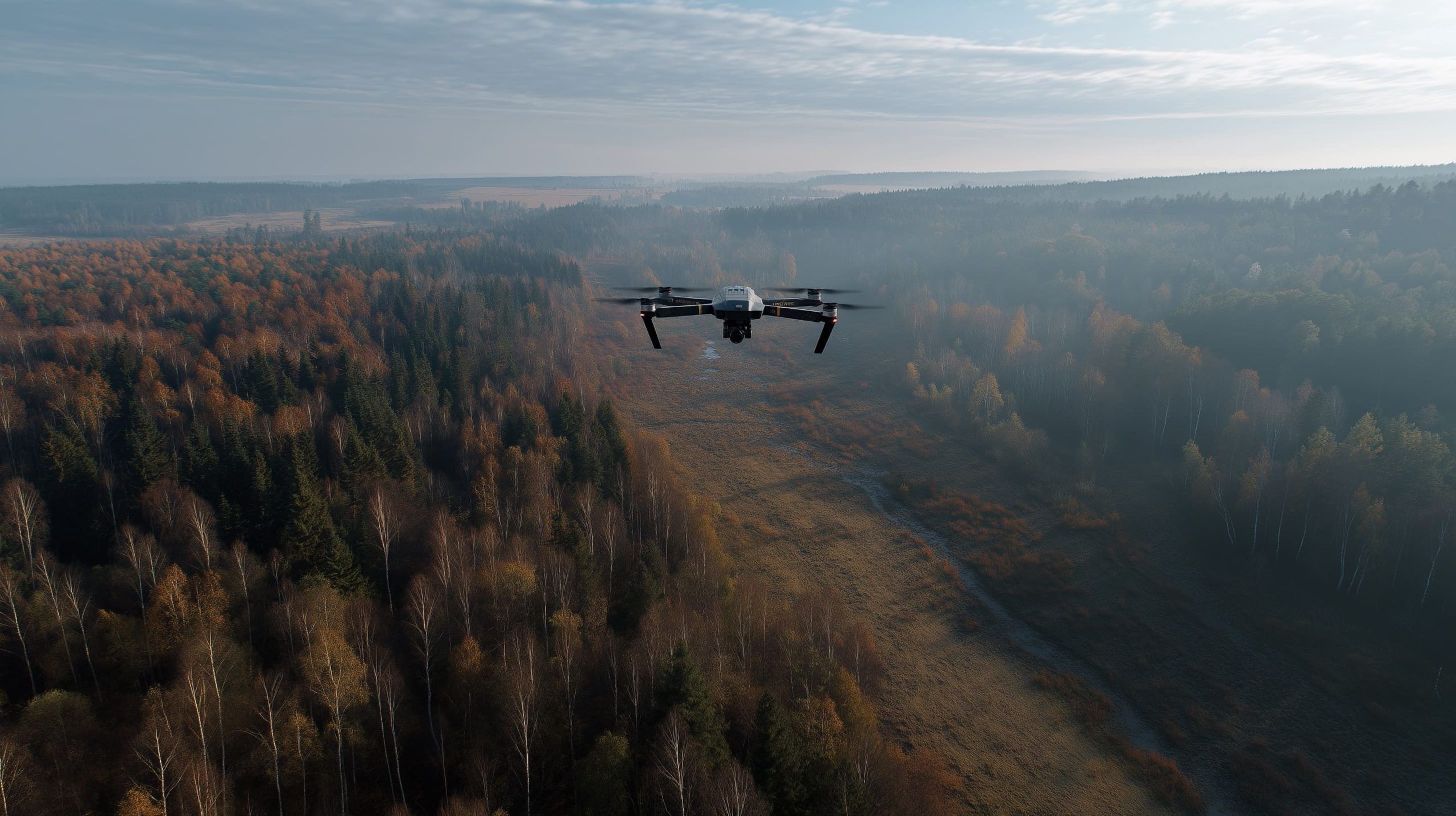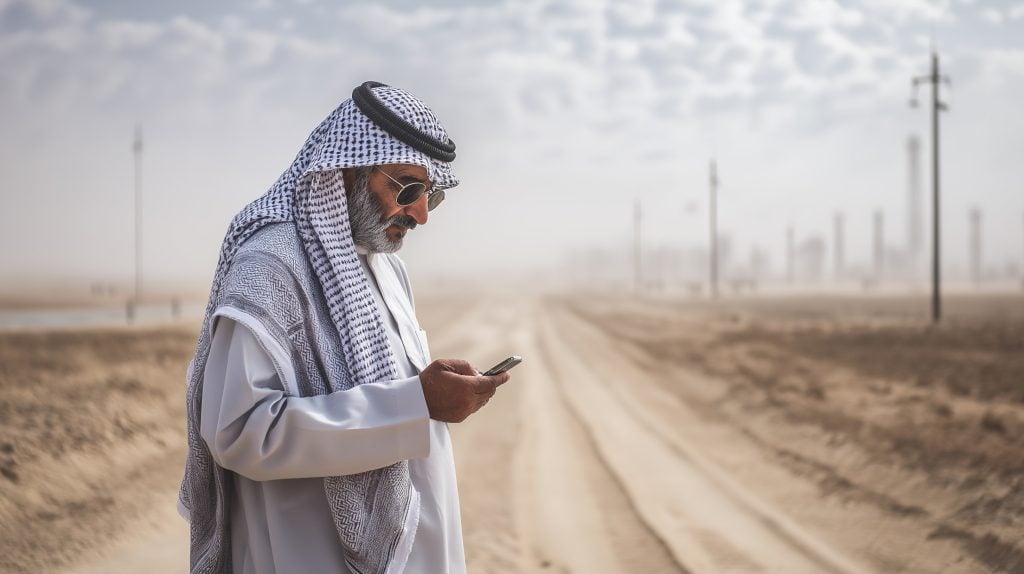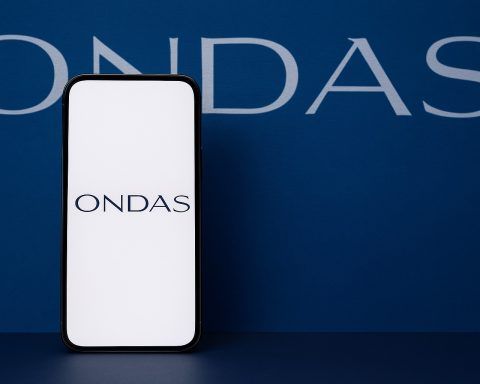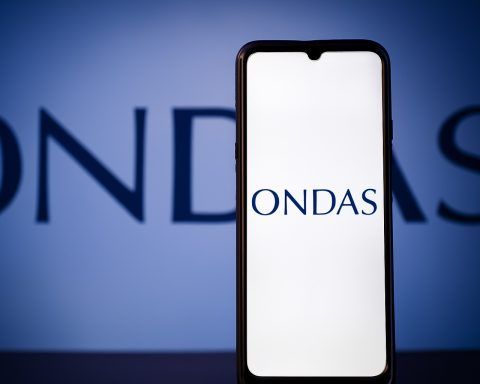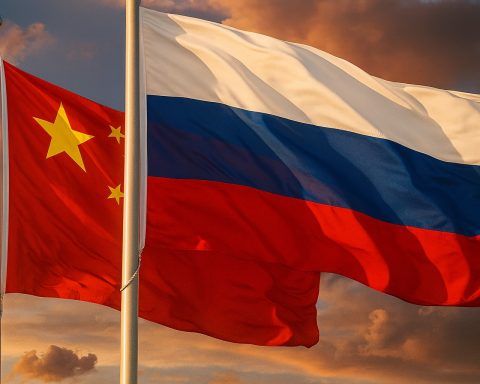- Since a 2015 amendment to the Air Code, Russia classifies all drones as aircraft under civil aviation law, with oversight by the Federal Air Transport Agency (Rosaviatsia).
- Drones are regulated by use category: hobbyist, commercial, and government, with separate licensing and registration for each.
- Drones over 150 grams and up to 30 kg must be registered with Rosaviatsia, a threshold lowered from 250 g in 2022.
- As of end-2023 over 93,000 civilian drones were registered; by end-2024 the total exceeded 116,000, with about 70–80% owned by individuals.
- Commercial drone pilots must obtain an Unmanned Aircraft Operator Certificate (UAV operator certificate) from March 1, 2022.
- Operational rules cap altitude at 150 meters above ground, require Visual Line of Sight at all times, and daylight-only flights unless a waiver is granted.
- Major no-fly zones include airports and military installations (prohibited within 500 meters of such sites), with a blanket civilian ban in Moscow since May 2023.
- To fly in controlled or restricted airspace, operators must obtain local government permission and an IVP permit from the air traffic management center.
- Drone liability insurance is effectively mandatory for drones over 150 g and must be shown during registration; hull insurance is not required.
- Enforcement includes fines up to 50,000 rubles for individuals and 300,000 rubles for organizations, possible criminal penalties up to two years for serious harm, and deployment of interception technologies and ERA-GLONASS tracking trials beginning in 2024–2025.
Russia has established a comprehensive legal framework governing unmanned aerial vehicles (UAVs or “drones”). All drones are classified as aircraft under Russian law since a 2015 amendment to the Air Code, placing them under the jurisdiction of civil aviation authorities [1]. This means drone operators must adhere to regulations similar to those for manned aviation, with oversight from the Federal Air Transport Agency and other authorities. Below is a detailed breakdown of Russia’s drone legislation, covering regulatory bodies, categories of use (hobbyist, commercial, and government), registration and licensing requirements, operational rules, airspace restrictions, privacy and insurance considerations, enforcement mechanisms, and recent updates. Key official resources are also provided for reference.
Regulatory Framework and Authorities
Primary Regulators: The Federal Air Transport Agency (FATA) – known in Russian as Rosaviatsia – is the federal executive body responsible for formulating and enforcing drone regulations in Russia [2]. FATA operates under the Ministry of Transport and oversees civil aviation safety, including UAV operations. Because drones are legally considered aircraft, many rules derive from the Air Code and aviation regulations, with FATA issuing guidelines and managing drone registration.
Role of the Ministry of Defense: The Ministry of Defense (MoD) governs military UAVs and coordinates airspace security. While FATA handles civilian drone usage, the MoD and security services impose additional restrictions in sensitive areas or during heightened security alerts. For example, in 2023 numerous regions (including Moscow city, Leningrad Oblast, and Pskov) banned civilian drone flights outright except for government-sanctioned uses, as a security measure amid the conflict in Ukraine [3] [4]. The MoD and law enforcement agencies work to detect and intercept unauthorized drones near strategic sites or during emergencies. Local authorities (often guided by MoD/security directives) also play a role in authorizing or denying drone operations in their jurisdictions, especially over cities and critical infrastructure.
Supporting Agencies: Air traffic control units under the Federal Air Traffic Management System are involved in granting flight permits and ensuring drones do not interfere with other airspace users. Additionally, regional and local governments have authority to approve or restrict drone flights over populated areas (discussed more below) [5] [6]. Non-government aviation organizations like AOPA-Russia collaborate by providing information (e.g. interactive maps of no-fly zones) to help pilots comply with the rules [7].
Categories of Drone Usage: Hobbyist, Commercial, and Government
Russian law distinguishes how drones are used more than the drones themselves, with different requirements for recreational flyers, commercial operators, and government/military use:
Recreational (Hobbyist) Drone Use
Hobbyist drone flying is legal in Russia and does not require a special pilot license for small drones flown purely for personal, non-commercial purposes [8]. Recreational users must, however, follow all operational safety rules and register their drone if it exceeds the minimum weight threshold (see registration section below). For very small drones under the weight threshold (now 150 g), no registration or permit is needed – these can be flown freely as long as they stay out of restricted zones [9]. In practice, if you fly a toy or camera drone in permitted areas and it’s under 150 grams, you do not need prior approval or a license. Hobbyists are expected to keep flights strictly for personal enjoyment and not for any profitable endeavor or service.
Even as a hobbyist, the general flight rules still apply: you must maintain line-of-sight, fly only in safe areas, avoid people’s private spaces, and stay away from prohibited locations (detailed under Operational Rules). Notably, operators under 14 years old are not allowed to own or fly drones heavier than the threshold, per regulations aimed at safety and accountability [10]. In summary, recreational pilots face less bureaucracy but remain subject to the safety and privacy regulations described later in this report.
Commercial Drone Use
Using drones for commercial or professional purposes (such as aerial photography services, inspections, deliveries, etc.) carries additional requirements. Most importantly, drone pilots must obtain an operator’s certificate to fly drones (up to 30 kg) for commercial use [11]. This certification requirement took effect on March 1, 2022, and mandates that commercial drone pilots undergo training and pass an exam to prove their qualifications. In essence, a drone operator’s license is now akin to a pilot license for unmanned aircraft when flying for hire or business. (Recreational flyers operating purely for personal use are exempt from this certification [12].)
Training and certification: The implementation of the licensing program has been evolving. Initially, in early 2022, industry participants noted a gap: the law required pilot training/certification, but no standard courses had yet been formally approved by the authorities [13]. Rosaviatsia, along with aviation education bodies, developed a professional standard for UAV operators (defining required skills like pre-flight preparation, emergency procedures, and communication with air traffic control) [14]. Now, several accredited training centers offer courses for drone pilots in Russia, including a State Center for Unmanned Aviation under the MoD and programs licensed by the Ministry of Education [15]. A would-be commercial drone pilot must complete an approved course and obtain the “external pilot of unmanned aircraft systems” qualification (often called a UAV operator certificate). This certificate is legally required when the drone is used for any commercial activity or services.
In addition to pilot licensing, commercial operators must ensure their drones are registered and carry the required insurance (see below). They also typically need to file flight plans or obtain flight permissions for each operation, especially in controlled or populated airspace [16]. Local authorities may require additional filming permits for media or filmmaking projects. In summary, while commercial drone operations are allowed in Russia, they are tightly regulated – pilots need to be certified and each flight often needs clearance from the relevant authorities.
Government and State Drone Use
Government-operated drones (those used by state agencies, law enforcement, emergency services, and the military) fall under separate rules and are broadly exempt from many of the civilian restrictions. State agencies can operate drones for official needs – such as surveillance, search-and-rescue, firefighting, or military reconnaissance – under internal procedures and mission-specific clearances. The broad ban on civilian drones in major cities introduced in 2023, for instance, explicitly exempted UAVs flown “by decisions of state authorities” [17]. This means police or emergency responders can still deploy drones, and military drones continue to operate, while private drones are grounded in those areas.
Military UAVs (including large drones over 30 kg) are not governed by Rosaviatsia’s civil framework; instead they are regulated by the Ministry of Defense under separate military airspace rules. For example, Russia’s Ministry of Defense manages its own drone pilot training and has units dedicated to drone operations. Military drones can fly in restricted airspace or combat zones as authorized by the MoD – these activities are outside the scope of civilian law. However, when military or government drones operate in civilian areas, they coordinate with air traffic authorities to avoid conflicts.
In summary, government drones have prioritized access to the airspace when needed for state purposes. They do not require the civilian registration or licensing that private users do, and indeed many laws (like no-fly zones or city bans) explicitly carve out exceptions for state-use drones [18]. That said, the government is also working on technologies (discussed later) to better integrate all drones into airspace management, which will likely include equipping even state UAVs with identification systems.
Drone Registration Requirements in Russia
Which drones must be registered: Russia imposes mandatory registration for most drones. Currently, all civilian drones weighing over 150 grams up to 30 kg must be registered with the Federal Air Transport Agency (Rosaviatsia) [19]. (This weight includes the drone’s maximum takeoff weight with any equipment.) The 150 g threshold was introduced in 2022, when the government tightened the rules – previously the cutoff for registration was 250 g, but it was lowered to 150 g to account for even smaller drones [20]. In practice, this means virtually any drone beyond a tiny toy now requires registration. Drones lighter than 150 g are exempt from the registry obligation and can be flown without paperwork [21], but operators should still follow safety rules.
Registration process: Drone registration in Russia is handled through Rosaviatsia and can be done online. New owners must apply for registration within 10 days of purchasing or importing a drone that meets the weight criteria [22]. Registration is typically done via the Unified Portal of State Services (Gosuslugi) or Rosaviatsia’s dedicated UAV registration portal [23]. The application requires providing details about the drone (make, model, serial number) and the owner’s information, as well as proof of insurance coverage for the drone [24] (insurance is discussed more below). Upon submission, the agency reviews the application and, if all is in order, assigns a unique registration number to the drone [25]. By law, Rosaviatsia must decide on the application within 30 calendar days [26], though in practice approvals are often faster (the process usually takes about 3–5 business days online) [27].
Once registered, the drone is entered into the national database of civil UAVs. The owner typically receives a certificate or confirmation of registration and the unique ID, which must be affixed to the drone (usually this is done via a sticker or engraving of the registration number on the aircraft). As of the end of 2023, over 93,000 civilian drones had been officially registered in Russia [28], and that number climbed to more than 116,000 by the end of 2024 [29] – reflecting the rapid growth of drone use. The majority of these registered drones (around 70–80%) belong to individuals, with the rest owned by companies or organizations [30].
Additional notes: Each registered drone must be marked and operated in compliance with the conditions of its registration. If a drone is sold or given to a new owner, or if it is destroyed/decommissioned, the change should be reported so the registry stays updated (Russian law provides a process for de-registration in such cases [31]). Foreign nationals bringing a drone into Russia (for example, a tourist or visiting professional) also fall under the registration rule – if the drone is over 150 g and will be used in Russia, it should be registered within 10 days of entry. The registration can be done by the foreign owner through the same online portals, possibly with assistance from a Russian sponsor or local representative if needed.
Failure to register a qualifying drone can result in penalties if the drone is discovered (for instance, flying an unregistered drone is considered an administrative offense). Thus, compliance with the registration requirement is crucial for anyone planning to operate a drone beyond the tiniest toy models.
Licensing and Certification of Drone Operators
Apart from registering the drone itself, Russia has introduced pilot licensing requirements for certain drone operators. As noted, hobbyist pilots flying drones for personal use do not need a license or certificate, provided the drone is under 30 kg [32]. However, for commercial or professional drone operations, the person controlling the drone must obtain an Unmanned Aircraft Operator Certificate (often informally called a drone pilot license).
This requirement came into effect on March 1, 2022. It was part of a broader update to aviation rules aimed at ensuring that those using drones for business have adequate training. Under this rule, if a drone (up to 30 kg) is being used for commercial purposes, the operator must be certified, whereas no certificate is needed if the same drone is used purely for leisure [33]. In other words, it’s the purpose of the flight, not the drone’s characteristics, that triggers the licensing mandate.
Training and exam: To get the UAV operator certificate, an individual typically needs to undergo a training course and pass an exam authorized by Rosaviatsia. The exact process has been developing: initially, Rosaviatsia was still in the process of approving a standard training curriculum, which caused a temporary gap where the law required a certificate but no official courses were available [34] [35]. This has been addressed by interim solutions – for example, a program approved by the Ministry of Education was offered through a training center named after cosmonaut Igor Volk, which anyone could enroll in as a path to become a certified external pilot [36]. Additionally, the industry association “Aeronext” in cooperation with Rosaviatsia helped develop professional standards for drone pilots, outlining the skills and knowledge needed (from preparing the drone for flight to coordinating with air traffic services) [37].
Now, as of 2025, multiple accredited schools and centers provide drone pilot courses across Russia (some universities and private aviation schools have UAV programs). After training, candidates must pass an exam or checkride that tests both theoretical knowledge of air law, navigation, meteorology, and practical flight skills. Successful candidates receive a pilot’s certificate for unmanned aircraft systems. This certificate is typically issued by Rosaviatsia or an authorized aviation training institution, and it serves as legal proof of the operator’s qualification.
Certification enforcement: Because the formal issuance of drone pilot licenses was still ramping up in 2022, there was a grace period where many commercial pilots operated without one. However, authorities now expect compliance. Commercial UAV operators who continue without proper certification could be considered “unqualified” and face sanctions if caught. It’s worth noting that, currently, the certification requirement applies to drones up to 30 kg in civil use. Drones heavier than 30 kg (which are more likely military or large industrial drones) have separate certification and airworthiness processes not covered by this particular license.
In summary, no pilot license is needed for personal recreational flying. But for business or other non-recreational drone flying, an operator must be trained and licensed. If you are, say, a company doing aerial surveying or a freelance photographer using drones, you should ensure you obtain the UAV operator certificate. As the regulatory framework matures, Russia is professionalizing the drone sector in much the same way as manned aviation, so that competent, licensed individuals are at the controls when drones are used commercially.
Airspace Restrictions and No-Fly Zones
Russia enforces strict airspace restrictions to protect sensitive areas and general aviation safety. Drone pilots must be keenly aware of where they can and cannot fly. Below are the major no-fly zones and airspace rules:
- Airports and Aerodromes: It is prohibited to fly drones near airports or airfields. Drones cannot operate in the vicinity of runways or flight paths used by manned aircraft. While Russian sources don’t specify a uniform distance in kilometers, a common practice is to avoid at least a several-kilometer radius around airports (for example, keeping a 5-mile (~8 km) distance was advised in earlier guidelines) [38]. Flying a drone within controlled airspace around an airport or heliport without permission is not allowed and would be considered a serious violation.
- Military and Strategic Sites: Drones are banned from flying over or near military installations, security-sensitive facilities, and strategic infrastructure. This includes military bases, training grounds, government buildings, power plants, and other critical infrastructure. Russian regulations explicitly forbid unauthorized UAV flights “within 500 meters” of any military installation [39]. Essentially, if a site is military or deemed vital to national security, it’s a no-fly zone for civilian drones. The same goes for state borders – border areas are sensitive, and drone flights near international frontiers can be seen as security threats [40].
- Densely Populated Areas: Flying over cities or crowds of people is heavily restricted. It is generally illegal to fly a drone directly over gatherings, such as concerts, demonstrations, sports events, or any “public events,” without special permission [41]. Urban downtowns and densely populated districts are considered high-risk for drone operations (due to safety and privacy). In fact, any flight over a populated area requires prior authorization. According to Russian rules, to fly over a town or city (if the drone is above 150 g), the operator must obtain permission from the local administration of that locality [42]. For example, if you want to fly over a small town, you need the town authorities’ go-ahead. For major cities (cities of federal significance like Moscow or St. Petersburg), approval must come from the regional executive authorities [43]. In practice, casual drone flights in downtown Moscow or St. Petersburg are not allowed without going through a complex permit process – and as noted below, they are currently outright banned in some cases.
- Moscow and other city bans: In response to security incidents, Moscow city has instituted a blanket ban on all unauthorized drones. Since May 2023, no private drones may be launched within Moscow’s city limits (inside the MKAD ring road); only drones used by government agencies are permitted [44] [45]. The Moscow Mayor’s office announced that permits for drone flights in the capital will now only be issued for state needs, and any civilian drone seen over the city is subject to interception and enforcement actions [46]. Similarly, other regions bordering Ukraine or hosting strategic facilities (e.g. Leningrad Oblast, Pskov, etc.) have issued temporary regional bans on civilian drones as part of heightened “martial law” alert levels [47]. These bans are open-ended and will likely remain as long as security conditions warrant. Drone pilots should assume that in many parts of western Russia and major urban centers, flying a drone is currently forbidden unless you have explicit official clearance. Always check the latest local rules – what might be allowed in one region could be prohibited in another due to local decrees.
- National Parks and Reserves: Russia’s environmental and cultural protection agencies restrict drone use over nature reserves, national parks, and cultural heritage sites. You must obtain a special permit to fly over protected natural areas [48]. Each park or reserve may have its own application process (often through the park administration or the Ministry of Natural Resources). The permit ensures that drone flights won’t disturb wildlife or other visitors. Absent a permit, these areas should be considered no-fly zones. Additionally, flying low over certain historic sites or churches might require coordination with cultural authorities or the Orthodox Church, though this is case-by-case.
- Dangerous and Restricted Zones: Certain areas are designated as permanently restricted or dangerous for flights, often for reasons such as industrial activity or frequent aircraft operations. Examples include zones around “dangerous industries” (perhaps chemical plants, mining operations, etc.) and special-use airspace used by the military for exercises [49]. Drone pilots must stay clear of any area marked as a restricted area on aeronautical charts. Russia publishes airspace notices and maintains maps of restricted areas, some of which are available through the AOPA-Russia portal in real time [50]. Always consult updated maps or apps to identify these zones.
Permission for controlled airspace: If a drone operator has a legitimate need to fly in a normally restricted area (for example, a film crew needing aerial shots in a city, or a construction company surveying near an airport), they can seek special permission. To do so, one must coordinate with two main entities: local government authorities (for the ground/population concerns) and the air traffic management authority (for airspace safety). As mentioned, local city or town administration must approve flights over their jurisdiction [51]. In addition, use of controlled airspace requires filing a request for airspace use (often called an IVP permit in Russian terms) with the regional ATC center [52]. For example, a pilot would submit a flight plan or application to the regional Zonal Center of the Unified Air Traffic Management System detailing when, where, and how high the drone will fly [53]. This request usually must be submitted in advance (in some cases, the rules say one day before, plus a notification two hours before flight to the ATC dispatcher) [54]. Only after receiving both local permission and ATC clearance can the flight proceed in these sensitive areas.
In summary, Russia’s airspace restrictions for drones are stringent. Expect that airports, military zones, state borders, and critical infrastructure are completely off-limits to your drone [55], and that any urban flying requires navigating a permit process. Given the evolving security situation, many regions outright prohibit private drones for now. It’s crucial for drone operators to check current restrictions for their specific location on the day of flight. Official resources, such as the Rosaviatsia or AOPA-Russia online maps, are valuable for identifying no-fly zones, and local government websites often post notices about temporary UAV bans.
Operational Rules for Drone Flights
When operating in allowed areas, drone pilots must abide by a set of operational rules designed to ensure safety. These rules dictate how, when, and under what conditions you can fly. Some of the key operational regulations in Russia include:
- Maximum Altitude: Drones are generally limited to an altitude of 150 meters (about 492 feet) above ground level when flying without a special permit [56]. This 150 m ceiling was set by a 2020 government resolution that allows certain low-risk flights without individual flight plans [57]. Flying above 150 m enters controlled airspace and would require explicit clearance from aviation authorities. In practical terms, recreational and most commercial drone operations should remain under this height. (Keep in mind that if you’re near an airport or in other restricted airspace, the allowable altitude might be effectively zero – i.e. no flying at all.)
- Visual Line of Sight (VLOS): You must maintain direct visual contact with your drone at all times during flight [58]. Flying Beyond Visual Line of Sight (BVLOS) is not permitted for general civilian operations in Russia unless specifically authorized in a particular project or test scenario. The VLOS rule means the pilot (or an observer in communication with the pilot) should be able to see the drone with unaided vision (no binoculars, etc.) and orient it. This inherently limits how far away the drone can go – typically a few hundred meters to a couple of kilometers at most, depending on size and visibility.
- Daylight-Only Operations:Drones may only be flown during daylight hours and in good weather conditions [59] [60]. Night flights (after official sunset and before sunrise) are forbidden unless you have obtained a special waiver. The rule is intended to ensure the pilot can maintain visual contact and that the drone’s position can be observed to avoid collisions. If someone wishes to fly at night – for instance, for a light show or a special operation – they must seek a waiver or permission from the authorities [61]. Waivers for night flying are typically granted only to certified operators with additional safety measures (like anti-collision lighting on the drone).
- Weather and Visibility: Pilots should only fly in favorable weather with good visibility [62]. Operations in heavy rain, snowfall, fog, or low clouds that impede visibility are not allowed. Not only would such conditions violate visual-line-of-sight requirements, they also pose risks to the drone’s stability and to other aircraft. There isn’t a specific minimum visibility distance codified for drones, but as a rule of thumb, if you wouldn’t fly a small airplane in those weather conditions, you shouldn’t fly a drone either. Always check weather forecasts and avoid flying in strong winds or precipitation that could impair control.
- Keep Safe Distance from People and Property: It is illegal to fly directly over uninvolved people. Drones must be kept away from residential areas, crowds, and congested urban locations unless you have special permission [63]. Even outside of cities, pilots should not fly over groups of people (parks, beaches, etc.) or close to buildings. There is a 500-meter buffer rule in the guidelines: do not fly within 500 m of any densely populated area, building, or assembly of people without explicit written permission [64]. Essentially, always maintain a considerable horizontal distance such that if the drone fails, it won’t fall onto people or property. When flying in open fields or countryside, avoid hovering over any bystanders or homes – keep your drone in open sky.
- No Flights Over Certain Facilities: As covered in No-Fly Zones, do not fly over sensitive structures or private property without consent. This includes not only obvious no-fly sites like military bases or power plants but also things like schools, hospitals, prisons, or private industrial sites. Additionally, do not fly over or near emergency response scenes (accidents, fires) unless authorized as part of the response – interfering with emergency helicopters or police activities is both dangerous and illegal.
- Crowd and Event Restrictions:Public events are explicitly called out: you may not fly a drone over concerts, rallies, sports events, parades, or other large public gatherings [65]. The only exception is if you have both local authority permission and have coordinated with law enforcement to ensure safety – which is rare. Drone light shows (where hundreds or thousands of micro-drones fly in formation) are a special case typically arranged with government approval; outside those, any drone buzzing over a crowd will be seen as a violation.
- Right-of-Way and Avoiding Other Aircraft: Drones must yield right-of-way to all manned aircraft unconditionally. If during your flight you notice a helicopter, low-flying crop duster, or any other aircraft in your vicinity, you must immediately descend or maneuver away to maintain separation [66]. Pilots are instructed to give priority to all other categories of aircraft and land their drone as soon as safely possible if an airplane or helicopter is approaching [67]. Never assume the manned aircraft sees your drone – the onus is on the drone operator to stay clear. Also, do not operate in known aircraft corridors (like near approach paths to airports, or near hospital heliports at any time).
- Launch and Landing Sites: Only take off from and land in safe, open areas where you have permission to be. You should avoid launching from airport grounds or helipads obviously, but also be mindful of private property. If you launch from a public park, ensure it’s allowed by local rules. In Moscow and some cities, designated areas or explicit permission is needed to even launch [68]. Also, do not launch or land from a location that is not under your control (for instance, someone else’s rooftop or fenced land without permission).
- National Parks / Nature Reserves: As mentioned, don’t fly in national parks or protected nature areas without a permit [69]. Even with a permit, operators might be given specific instructions like not disturbing wildlife (e.g., keeping distance from animal herds or bird nesting areas).
- Special Permissions for Exceptions: If you need to deviate from any of the above operational rules (higher altitude, night time, beyond line of sight for specific projects, etc.), you must apply for a waiver or special permit from the authorities [70]. Rosaviatsia can issue waivers for specific operations (for example, a research project testing a long-range drone might get permission to fly beyond visual line of sight in a sparsely populated area, or a film crew might get permission for a night shoot with a drone). These are handled on a case-by-case basis and usually involve demonstrating additional safety measures.
In short, Russia’s operational rules for drones align with common-sense safety: fly low, within sight, in daylight, away from people and airports. Always err on the side of caution – if a particular flight scenario feels like it might be risky or not clearly allowed, assume you need additional approval. The combination of these rules aims to prevent accidents and interference with other air traffic.
Privacy and Data Protection
Russian law does not yet have a drone-specific privacy statute, but general privacy and data protection laws absolutely apply to drone use. The Civil Code and other statutes protect citizens’ rights to privacy, and violating those rights with a drone can lead to legal trouble. Key points to consider:
- Respect for Privacy: Drone pilots are expected to avoid intruding on others’ privacy. The official guidelines explicitly remind operators to be mindful of privacy when flying [71]. This means you should not use your drone to hover near people’s windows, yards, or private activities. Taking photos or videos of individuals on private property without consent can violate privacy laws. In Russia, as in many countries, everyone has an expectation of privacy in their home or other private spaces.
- Data Protection: If a drone is used to collect personal data (e.g., facial images of people, car license plates, etc.), the operator might be subject to Russia’s data protection regulations. The Federal Law on Personal Data could be invoked if you record identifiable individuals and especially if you store, publish, or transmit that data. For commercial operators capturing any footage containing people, it’s wise to anonymize or obtain releases if the footage will be made public.
- Aerial Surveillance Concerns: Be cautious about any form of surveillance. Using drones for unauthorized surveillance of someone (stalking, tracking movements, recording conversations with a zoom microphone, etc.) is illegal. Russia’s laws on violation of privacy (Article 137 of the Criminal Code) and illegal trafficking of special technical means for obtaining information (Article 138.1) could potentially come into play if someone uses a drone with advanced cameras or listening devices to spy on others.
- Restrictions on Filming Sensitive Sites: Just as drones shouldn’t fly over certain sensitive areas, you are prohibited from photographing or video-recording certain facilities. Particularly, filming military installations or other secure government sites is not only a trespass issue but could be treated as a breach of national security. Unauthorized imagery of such sites might be considered gathering of classified information. Russian authorities have warned that illegal drone filming of secure objects can be prosecuted as espionage or violation of state secrecy laws [72]. For example, flying a drone near a military base to take pictures could lead to very severe criminal charges beyond just an aviation violation.
- Public Photography Rules: In general public spaces, photography (including via drone) is allowed, but you should still avoid focusing on individuals without permission. Publishing drone footage that clearly identifies people without their consent could expose you to civil lawsuits or regulatory penalties under personal data laws. If your drone has a camera, use it responsibly: capturing panoramic cityscapes is fine, but zooming in on someone’s balcony is not.
- Cybersecurity of Drones: While not a direct privacy issue, note that drones often record data (video files, flight logs). Operators should secure those data (especially if it’s sensitive or personal) to prevent breaches. Russia has laws against disseminating illicitly obtained personal information; if your drone recorded something private and you leak it, you could face liability.
In summary, drone pilots must act responsibly with the data their drones collect. Always imagine yourself on the other side: would you be comfortable with a stranger’s drone filming you or your home in this situation? If not, don’t do it to others. The regulatory emphasis is on courtesy and legality: don’t violate people’s privacy rights, and don’t collect imagery that could compromise security or personal data. The consequences for breaches range from civil fines to, in extreme cases, criminal charges (as noted, photographing protected state secrets with a drone could invoke espionage laws [73]).
It’s worth noting that Russian authorities themselves have begun using drones for law enforcement and monitoring (with legal authorization). But private citizens should stick to using drones in a manner that doesn’t infringe on others’ rights. When in doubt, get permission from those you plan to film, or blur out faces/license plates in your recordings.
Insurance Requirements for Drones
Drone insurance is effectively mandatory in Russia for any significant drone operations. The law requires proof of insurance during the registration process for drones, which means if your drone is heavy enough to need registration (>150 g), you must have an insurance policy for it [74]. Typically, this refers to third-party liability insurance that would cover damage or injury caused to others by your drone.
When applying to register a drone with Rosaviatsia, owners are asked to submit “insurance documentation” along with the drone’s details [75]. This indicates that Russia wants drone operators to carry liability coverage in case the drone crashes into a person, vehicle, or property. The exact required coverage amount isn’t specified in summary sources, but the policy should be sufficient to cover potential damages (some sources recommend coverage equivalent to what manned aircraft of similar weight would require). It’s advisable to contact a local insurance provider to obtain a UAV liability policy that meets Russian regulations.
Who needs insurance: Both hobbyists and commercial operators are expected to insure their drones if the drone is over 150 g. The drone-laws information site confirms that insurance is required for all drone operations in Russia, recreational and commercial alike [76] [77]. This is somewhat unusual compared to many countries, but it reflects Russia’s cautious approach – ensuring victims can be compensated in the event of an accident. Even if you’re flying just for fun, if your drone is not a tiny toy, you should have insurance.
Coverage type: The required insurance is liability coverage (not hull insurance for the drone itself). It would cover things like: if your drone accidentally hits a bystander and injures them, or causes a car accident, or damages someone’s roof or window, the policy would pay out claims up to a certain limit. It’s similar to car insurance but for drones. The law does not appear to mandate hull insurance (coverage for damage to your own drone), that’s optional for your own protection.
Insurance process: Obtaining drone insurance in Russia can often be done through insurance companies that offer aviation or specialty insurance. Some insurers have specific policies for “БПЛА” (UAVs). You’ll typically need to provide the drone’s specifications, intended use (recreational vs commercial), and possibly your experience or certifications. Premiums may vary based on the drone’s weight and the coverage limit.
Enforcement: Without insurance, you won’t be able to complete registration of the drone, since Rosaviatsia asks for that documentation [78]. Operating an uninsured drone (that should be insured) would thus mean you’re operating an unregistered drone, which is a violation. In the event of an incident, lack of insurance would also leave you personally liable for all damages.
It’s also mentioned in guidelines that having insurance is “prudent” even for smaller drones [79] [80]. While a tiny <150 g drone might not legally need insurance, it is still recommended to carry one if you fly often, because accidents can happen.
In summary, drone insurance in Russia is a legal requirement tied to registration and a practical necessity. Operators should secure a policy before flying, to ensure they are in compliance and protected from financial risk. Always carry proof of insurance when flying, especially if you’re a commercial operator, as authorities might ask for it during inspections or after an incident.
Enforcement Practices and Penalties
Russia has a robust enforcement regime for drone laws, with significant penalties for violations. Several agencies including the police, the Federal Security Service (FSB), and local authorities are involved in enforcing drone regulations. Here’s what to expect in terms of enforcement and punishments:
- Administrative Fines: Flying a drone illegally (for example, without registration, in a prohibited area, or without required permits) is considered an administrative offense. Under Russia’s Code of Administrative Offenses, Article 11.4, violators can face fines of up to 50,000 rubles for individuals [81]. For organizations (like a company operating a drone unlawfully), fines can go up to 300,000 rubles [82]. These are the standard maximum fines and would apply to things like unauthorized launches, not having the drone registered, or breaching flight rules. For a first-time individual offender, fines might be on the lower end (a few thousand rubles), but they can increase for repeat offenses or if the violation caused some disruption. Law enforcement in multiple regions have shown readiness to issue such fines – for instance, in some areas people have been fined 5,000 rubles just for flying drones during recent drone bans [83].
- Liability for Injuries or Damage: If a drone flight results in injury or property damage, additional penalties kick in. Causing harm “by negligence” through an unauthorized drone flight carries its own fines. If a person sustains minor or moderate injuries, the drone operator (if found at fault) can be fined up to 2,500 rubles (and up to 100,000 rubles for a company) [84]. These amounts might seem lower than the general flying fines, but they are separate and can stack on. They essentially cover the breach of public safety aspect. Of course, the operator would also be civilly liable to pay for the actual damages or medical bills, which insurance would cover if in place.
- Criminal Charges for Severe Outcomes: If a drone causes serious injury or death to someone due to the operator’s negligence, it escalates to a criminal offense. In such tragic cases, the operator can face up to 2 years of imprisonment under criminal law [85]. The threshold is typically causing grievous bodily harm or fatality by violating aviation safety rules. Fortunately, such cases are extremely rare, but the law provides for them. Moreover, as noted earlier, if a drone is used in a way that breaches national security (e.g., filming secret military sites, or perhaps smuggling contraband across borders), the operator could be charged with crimes like espionage or illegal information gathering, which carry heavy prison sentences [86]. For example, there have been cases of foreigners arrested for flying drones near sensitive areas and accused of spying.
- Drone Confiscation: In addition to fines, authorities can seize the drone used in an offense. If you are caught flying illegally, the drone may be confiscated as evidence and potentially forfeited. Especially in cases of repeated violations, courts can order the equipment to be taken away.
- Interception Technology: Russian authorities employ technological means to enforce no-fly zones. Many major cities are equipped with GPS jammers and signal disruptors that can disable or “geo-fence” drones [87]. Pilots often find their drones unresponsive or forced to land when they inadvertently (or deliberately) fly into protected city centers. In Moscow, St. Petersburg, and other sensitive locales, this electronic countermeasure is common – it acts as a preventive enforcement tool by making drone navigation erratic or impossible in restricted areas [88]. Additionally, law enforcement and the National Guard have been deploying drone detection and mitigation systems. For instance, in some regions units have electronic warfare equipment capable of detecting a drone’s control frequency and forcing it to land or crash if it’s unauthorized [89].
- Intercept and Liability: The Moscow city government in 2023 explicitly stated that they are bolstering efforts to intercept illegal drones and hold pilots accountable [90]. Mobile police teams and even volunteers keep an eye out for drones where they shouldn’t be. If a drone is spotted in a banned area, authorities may attempt to physically capture it (there are reports of police using radio guns or even trained birds in some countries, though not sure about Russia specifically). At the very least, they will try to locate the operator – note that registered drones broadcast identification (and with future mandatory trackers, this will get even easier for authorities to pinpoint, as discussed in the next section). If caught, the operator will face the above-mentioned fines or charges.
- Legal Process: Typically, minor drone offenses are handled as administrative cases. The police or aviation authorities will write up a violation report. The case might go to an administrative court where a judge decides the fine. For serious matters (injuries, large damages, security breaches), it goes into the criminal system with investigations by the Ministry of Internal Affairs or FSB. In either scenario, compliance is better than facing legal action. The Russian system can be strict, and given current security concerns, the tolerance for unauthorized drones is extremely low.
- Recent Enforcement Trends: With the ongoing conflict and incidents of drones being used in warfare, Russian authorities have become particularly vigilant. There are documented cases of individuals being fined or detained for flying drones in border regions or near critical sites, even if their intent was innocent (for example, hobbyists near a refinery where a drone attack had occurred). Additionally, the dissemination of drone footage can itself attract fines – in some regions, sharing videos of drone strikes or military locations has been penalized under wartime censorship rules [91]. This is more about information control than aviation law, but drone enthusiasts should be mindful that posting certain aerial videos publicly could raise red flags.
To sum up, enforcement in Russia is strict and multi-layered. You’re expected to follow the rules to the letter; if you don’t, you may face steep fines, confiscation of equipment, or worse. The government actively uses technology and police powers to prevent unauthorized drone use, especially in the current climate. Therefore, it’s crucial for anyone flying a drone in Russia to stay within legal bounds – register your drone, get any necessary permits, stick to allowed areas, and obey all operational rules. By doing so, you’ll avoid unpleasant encounters with the law and help promote the safe integration of drones into Russian airspace.
Recent Updates and Future Developments
Russia’s drone laws have evolved significantly in recent years, and more changes are on the horizon as drone usage expands. Here are some of the important recent updates and expected future developments in the Russian drone regulatory landscape:
- 2017 Introduction of Mandatory Registration: While drone registration is old news now, it’s worth noting that mandatory registration was first introduced in 2017 (via amendments to the Air Code) as Russia’s initial step to regulate UAVs [92]. That law established the >250 g registration requirement and the 10-day rule for new purchases [93]. The industry pushback at the time was strong, with critics arguing it would burden hobbyists (like those flying model airplanes or toy drones) without a huge safety benefit [94]. Despite concerns, Russia moved ahead, creating the framework that is in force today.
- 2022 Tightening of Rules (Threshold Lowered to 150 g): In March 2022, in the context of increased domestic drone production and security concerns, the Russian government lowered the minimum weight for mandatory registration from 250 g to 150 g [95] [96]. This was a significant change that brought even more drones (like certain small DJI models and racing drones) into the formal system. The decision was somewhat controversial – representatives of the drone industry (e.g. Aeronext Association) publicly questioned the need for such a low threshold, pointing out it would adversely affect things like drone light shows (which use swarms of tiny drones) and educational drone programs [97] [98]. They argued registering hundreds of 200-gram mini-drones is impractical. Nevertheless, the rule took effect, and owners of drones heavier than 150 g that were already in use were given a 60-day grace period to register them [99]. This update underscores Russia’s cautious stance – essentially capturing virtually all drones in the registration net. It also reflects an ongoing tension between regulatory control and industry innovation.
- 2022 Introduction of Pilot Certification: As detailed earlier, March 2022 also marked the enforcement of the drone pilot licensing requirement for commercial use [100]. This is a major development in professionalizing the sector. Over time, we can expect the process to become more streamlined – e.g., Rosaviatsia approving more training programs and perhaps eventually issuing something akin to a unified license (similar to a driver’s license) for drone pilots. Currently, the focus is on ensuring commercial operators are qualified; in the future, there might even be tiers of certification (for example, a basic certificate for VLOS operations and an advanced certificate for beyond-line-of-sight or heavier drones). Monitoring how this unfolds will be important for anyone planning a drone services business in Russia.
- 2023 Security Measures and Temporary Bans: The conflict with Ukraine has had a direct impact on drone regulations domestically. After incidents of unknown drones flying into Russian territory (and even an attempted strike on the Kremlin), authorities responded with broad measures:
- Regional UAV Bans: Starting May 2023, Moscow and at least a dozen other regions banned civilian drone flights, citing the need to prevent “unauthorized UAV use that could hinder law enforcement” [101]. These measures, tied to a presidential decree on martial law readiness, have no fixed end date. They represent a de facto tightening of drone usage that goes beyond published aviation rules. Essentially, in those regions, no hobby or commercial drone flying is allowed at all until further notice.
- Enhanced Enforcement Technology: The government accelerated the deployment of counter-UAV systems. By mid-2023, many oblasts had equipped police and National Guard units with electronic warfare gear to detect, jam, and down drones that violate the bans [102]. There’s also an emphasis on public warning systems – e.g., ensuring air raid alert networks can notify residents of drone threats [103].
- These steps, while born out of wartime necessity, could have long-lasting effects. Drone operators should be prepared for stricter scrutiny and maybe even background checks or registration of pilots in the future, under the guise of national security.
- ERA-GLONASS Drone Identification System (2024–2025): One of the most significant ongoing developments is the testing of a comprehensive drone identification and tracking system. In early 2025, Russia began trials of an integrated UAV monitoring system based on the ERA-GLONASS platform (the same system used for emergency response in vehicles) [104]. This system uses special trackers (with embedded SIM cards) attached to drones, which broadcast the drone’s identity and real-time location via the GLONASS satellite network and cellular networks [105]. The trackers have encrypted transmission for security and are designed to work in harsh conditions (withstand cold, no need for external power) [106]. The aim is to enable authorities to see all drone movements in the airspace in real time on regional monitoring center screens [107]. If a drone enters a restricted area or violates a flight rule, the system can even send a remote command to trigger a forced landing of that drone [108]. This capability was already tested successfully in late 2024 on drones and light aircraft in a pilot project in Sakhalin [109]. The ERA-GLONASS UAV tracking project is part of the national “Unmanned Aircraft Systems” initiative, which has the backing of President Putin to integrate drones into the economy while ensuring safety [110]. The next phase (through 2025 and beyond) involves rolling this system out more broadly, including adding satellite communication components for coverage in remote areas [111]. What this means for drone law is that Russia may soon require mandatory remote ID for drones – essentially every drone might need to carry one of these approved trackers broadcasting its ID. This is analogous to the “Remote ID” requirement the U.S. FAA has implemented, but Russia’s approach might be even more actively integrated with law enforcement (given the forced landing feature). Keep an eye out for new regulations that mandate installing such devices on drones above a certain weight. The groundwork is being laid now, and once fully operational, this system will dramatically change how drones are policed in Russia (making it very hard to fly undetected).
- Growing Domestic Drone Production and Use Cases: On the industry side, Russia is dramatically ramping up domestic drone production (partly spurred by the need for military drones, but with civilian spillover). Reports indicate plans to produce millions of drones annually in the coming years. Legislation will likely adapt to encourage certain uses – for instance, expect clearer rules around delivery drones, agricultural drones, and urban air mobility as these sectors grow. Already, some regions (like Yamalo-Nenets) have been pioneering local regulations to facilitate drone use in Arctic conditions and for tasks like pipeline monitoring [112]. The federal government might introduce a differentiated framework – perhaps lighter rules for certain low-risk industrial drone operations away from populated areas.
- Simplification for Certain Operations: There have been hints of possibly streamlining the flight permission process for routine operations. For example, that February 2020 resolution simplified things by allowing drones <30 kg to fly under 150 m in daylight without needing an explicit flight plan each time, as long as other conditions are met [113]. We may see more of such “general permissions” in the future, especially once the tracking system is in place to mitigate risk. The entry [33] in the search results even suggests that updated rules explicitly allow drone flights over towns below 150 m in daylight (with some conditions) [114] – which appears to confirm that general concept. This could be a sign of gradually opening up more airspace for drone use, in a controlled way.
- Urban Air Mobility and Heavier Drones: Looking further ahead, as technology progresses, Russia will need to address drones above 30 kg and passenger drones (air taxis) in its laws. The current framework tops out at 30 kg for “small” drones. Already, Russian companies have developed heavier UAVs (e.g., an agricultural drone S-80 was mentioned as being certified in one region [115]). We can anticipate new certification categories for these larger UAVs, possibly treating them more like traditional aircraft (with type certification, pilot licenses, etc.). The government’s interest in being a leader in drone tech means they will eventually create corridors or systems for larger drones – perhaps after the war, when infrastructure investment can refocus on civilian tech.
In conclusion, drone laws in Russia are actively evolving. Recent changes have generally tightened control (lower weight threshold, pilot licensing, more restrictions in cities, remote ID trials) in the interest of safety and security. At the same time, the government is also looking to enable broader drone usage (through projects like ERA-GLONASS tracking and clarifying rules for low-risk flights) to boost economic innovation. Anyone involved in the drone industry or hobby should stay updated via official channels, as new decrees and orders can come with little notice, especially in the current security climate. Being compliant today is not enough if the rules change tomorrow – so regularly checking Rosaviatsia announcements and government press releases on UAV policy is highly recommended. With proper adherence to the legal framework, drone operators in Russia can look forward to a future where drones are integrated into many aspects of life, from deliveries to filmmaking, albeit under the watchful eye of regulators and tracking systems.
Official Resources and References
For those seeking more information or the latest updates on Russian drone regulations, the following official sources are invaluable:
- Federal Air Transport Agency (Rosaviatsia) – Official Website: Rosaviatsia publishes regulations, guidance, and news related to civil aviation (including drones) on its site. Key documents like the Air Code, registration rules, and any new resolutions can often be found here. (Website: favt.ru – primarily in Russian.)
- Rosaviatsia’s Drone Registration Portal: This is the dedicated online system for putting drones on the national registry. You log in via the Unified Portal of State Services (Gosuslugi) and submit registration applications through this interface [116]. It’s the official channel to register or deregister a UAV. (Website: bvs.favt.ru – in Russian, requires login with a Gosuslugi account.)
- Unified Portal of State Services (Gosuslugi): The one-stop portal for many government services, including drone registration. There is a specific service for registering an unmanned aircraft. By searching “беспилотное воздушное судно” on gosuslugi.ru, you can find the service and instructions. This portal is also used for requesting flight permissions in some regions.
- Moscow Mayor’s Office – Drone Regulations Page: The Moscow city government (mos.ru) had published informational articles about drone rules in the capital [117]. Given the recent ban, the site might also have notices regarding the prohibition and how to apply for exceptions for state use. If you plan to operate in Moscow (when allowed), the city’s official statements are a must-read.
- Local Government Websites: If you intend to fly in a particular region or city, check the official regional administration website for any local ordinances or announcements about drones. For example, St. Petersburg’s government site or any other region’s portal may have sections on drone usage or contact info for permit applications.
- Ministry of Defense / Ministry of Emergency Situations: For government and emergency-use drones, these ministries have internal guidelines. Not public for civilian use, but worth noting if coordinating with them for any reason.
- AOPA-Russia Interactive No-Fly Zone Map: The Russian chapter of the Aircraft Owners and Pilots Association (AOPA) reportedly hosts an interactive map of restricted areas for drones, updated in real time [118]. This can be a very useful tool to visualize where you can or cannot fly. (One might need to access this through AOPA Russia’s website or an app.)
- Legal Information Portals: The official portal of legal information (publication.pravo.gov.ru) publishes government decrees and laws. For instance, the 2022 resolution lowering the registration weight was posted there [119]. Although these are in legalese (and in Russian), they are primary sources for any new rules.
- SafeAirspace and NOTAMs: While not a Russian government source, websites like SafeAirspace.net monitor risk and no-fly notices (including the war-related warnings) [120]. Additionally, pilots can check Notices to Airmen (NOTAMs) that Rosaviatsia issues for short-term restrictions (some drone-related NOTAMs exist during events or VIP visits).
- UAV Coach / Drone Laws Websites: Sites like UAV Coach or Drone-laws.com compile current rules (with references) and are good starting points for an overview. However, always cross-reference with official sources, especially for the latest changes.
- Contacts: Rosaviatsia can be contacted for clarification – they have a public phone line and email (as listed on their site or the UAV Coach page [121]). The local Air Traffic Management units (Zonal Centers) also have contact info to help with flight permit applications [122]. For Moscow, the Department of Regional Security handles drone flight permissions (with an office on Novy Arbat Street for submitting applications) [123].
Staying informed through these channels will help ensure you fly your drone legally and safely in Russia. Regulations can change, and ignorance is not considered a valid excuse for violations. By consulting the above resources regularly, you can catch any new rules – such as an announcement if Remote ID trackers become mandatory, or if a temporary ban in your area is lifted or imposed. Always plan your flights with both the law and safety in mind, and when in doubt, seek permission from the relevant authority. Russia’s drone laws may be strict, but they provide a framework aiming to enable drone operations in a controlled and secure manner, and being well-informed is the key to successfully navigating this framework.
Sources:
- Russian Federation Air Code Amendments and Rosaviatsia Guidelines [124] [125]
- Rosaviatsia / RuAviation news on UAV registration statistics and process [126] [127]
- Russian Government Resolution (2022) on registration threshold (RBC News) [128] [129]
- Argumenty i Fakty – Expert Q&A on drone laws (licensing, permits, no-fly zones, penalties) [130] [131] [132] [133] [134] [135]
- Unmanned Airspace / Propel RC – Overview of Russian drone rules (operations and restrictions) [136] [137] [138]
- FilmSPB – Guide to drone filming in Russia (operational requirements and fines) [139] [140]
- TASS & Jerusalem Post – News on 2023 drone bans in Moscow and regions [141] [142]
- RuAviation – Testing of ERA-GLONASS drone ID system (future tracking tech) [143] [144]
- Drone-laws.com and UAV Coach – Summaries of Russian drone regulations [145] [146]
References
1. www.unmannedairspace.info, 2. www.propelrc.com, 3. www.jpost.com, 4. tass.com, 5. aif.ru, 6. aif.ru, 7. aif.ru, 8. aif.ru, 9. filmspb.tv, 10. www.kp.ru, 11. aif.ru, 12. aif.ru, 13. aif.ru, 14. aif.ru, 15. aif.ru, 16. aif.ru, 17. www.jpost.com, 18. tass.com, 19. www.rbc.ru, 20. www.rbc.ru, 21. filmspb.tv, 22. www.rbc.ru, 23. ruavia.su, 24. drone-laws.com, 25. ruavia.su, 26. ruavia.su, 27. aif.ru, 28. ruavia.su, 29. www.ural.favt.ru, 30. ruavia.su, 31. ruavia.su, 32. aif.ru, 33. aif.ru, 34. aif.ru, 35. aif.ru, 36. aif.ru, 37. aif.ru, 38. www.unmannedairspace.info, 39. www.unmannedairspace.info, 40. ruavia.su, 41. filmspb.tv, 42. aif.ru, 43. aif.ru, 44. tass.com, 45. aif.ru, 46. tass.com, 47. www.jpost.com, 48. www.unmannedairspace.info, 49. aif.ru, 50. aif.ru, 51. aif.ru, 52. aif.ru, 53. aif.ru, 54. aif.ru, 55. ruavia.su, 56. filmspb.tv, 57. filmspb.tv, 58. filmspb.tv, 59. www.unmannedairspace.info, 60. filmspb.tv, 61. www.unmannedairspace.info, 62. www.unmannedairspace.info, 63. www.unmannedairspace.info, 64. www.unmannedairspace.info, 65. filmspb.tv, 66. www.unmannedairspace.info, 67. www.unmannedairspace.info, 68. filmspb.tv, 69. www.unmannedairspace.info, 70. www.unmannedairspace.info, 71. www.unmannedairspace.info, 72. aif.ru, 73. aif.ru, 74. drone-laws.com, 75. drone-laws.com, 76. drone-laws.com, 77. drone-laws.com, 78. drone-laws.com, 79. drone-laws.com, 80. www.unmannedairspace.info, 81. aif.ru, 82. aif.ru, 83. www.jpost.com, 84. aif.ru, 85. aif.ru, 86. aif.ru, 87. www.propelrc.com, 88. www.propelrc.com, 89. www.jpost.com, 90. tass.com, 91. meduza.io, 92. dfnc.ru, 93. dfnc.ru, 94. dfnc.ru, 95. dfnc.ru, 96. dfnc.ru, 97. dfnc.ru, 98. dfnc.ru, 99. dfnc.ru, 100. aif.ru, 101. www.jpost.com, 102. www.jpost.com, 103. www.jpost.com, 104. ruavia.su, 105. ruavia.su, 106. ruavia.su, 107. ruavia.su, 108. ruavia.su, 109. ruavia.su, 110. ruavia.su, 111. ruavia.su, 112. www.ural.favt.ru, 113. filmspb.tv, 114. www.kras.favt.ru, 115. www.kras.favt.ru, 116. ruavia.su, 117. uavcoach.com, 118. aif.ru, 119. dfnc.ru, 120. safeairspace.net, 121. uavcoach.com, 122. filmspb.tv, 123. filmspb.tv, 124. www.unmannedairspace.info, 125. www.propelrc.com, 126. ruavia.su, 127. ruavia.su, 128. www.rbc.ru, 129. www.rbc.ru, 130. aif.ru, 131. aif.ru, 132. aif.ru, 133. aif.ru, 134. aif.ru, 135. aif.ru, 136. www.unmannedairspace.info, 137. www.unmannedairspace.info, 138. www.unmannedairspace.info, 139. filmspb.tv, 140. filmspb.tv, 141. tass.com, 142. www.jpost.com, 143. ruavia.su, 144. ruavia.su, 145. drone-laws.com, 146. uavcoach.com
